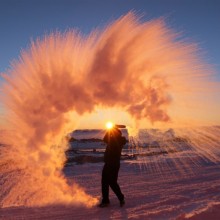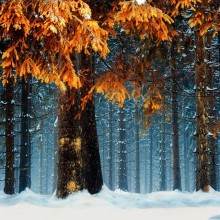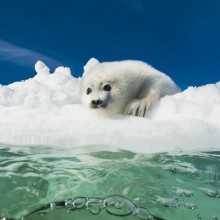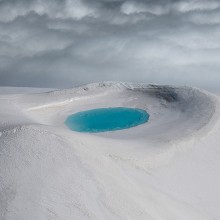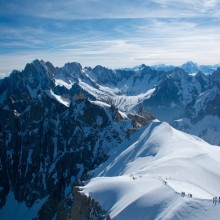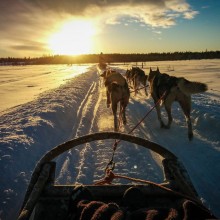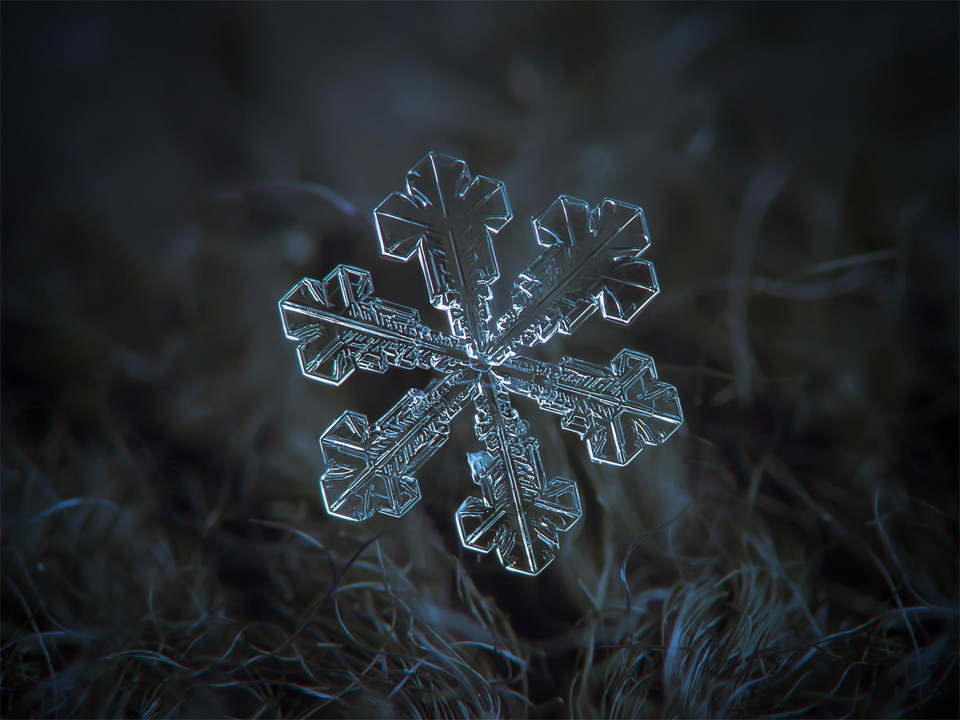
Amazingly, snowflakes always have six sides and similar to the human fingerprint, it is thought that no two snowflakes are ever exactly the same. Photo by: Alexey Kijatov
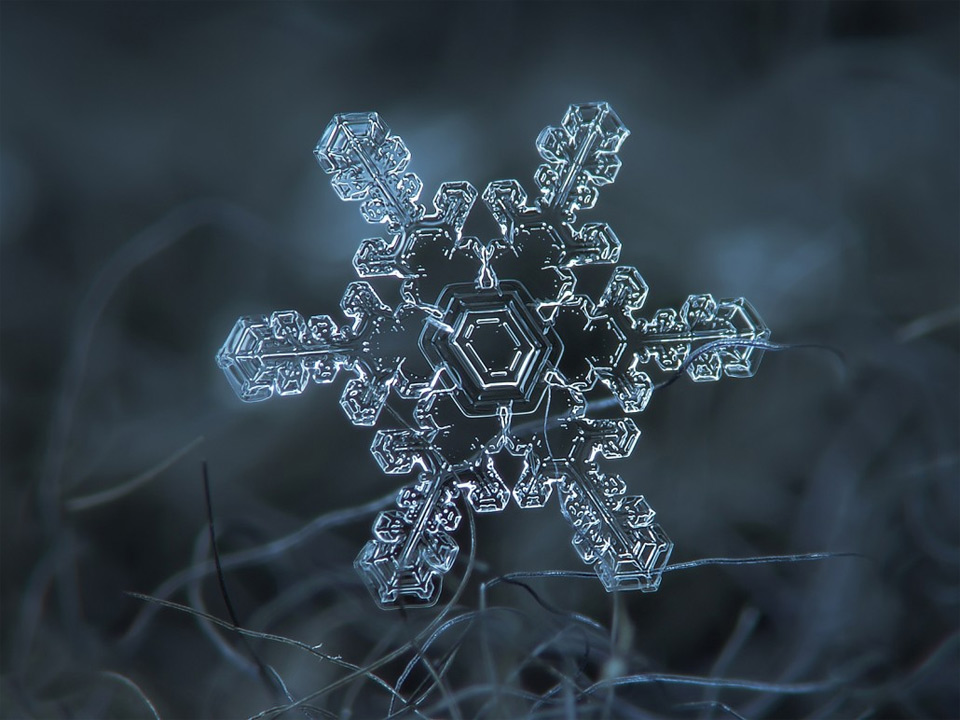
Snow crystals form in clouds when the temperature is underneath freezing point. They are created by water droplets freezing on small ice particles. Photo by: Alexey Kijatov

As an ice crystal drops through the cloud it bumps and knocks others and becomes a snowflake. This process of bumping others, along with a little melting and re-freezing aids the creation of their complex design. Photo by: Alexey Kijatov
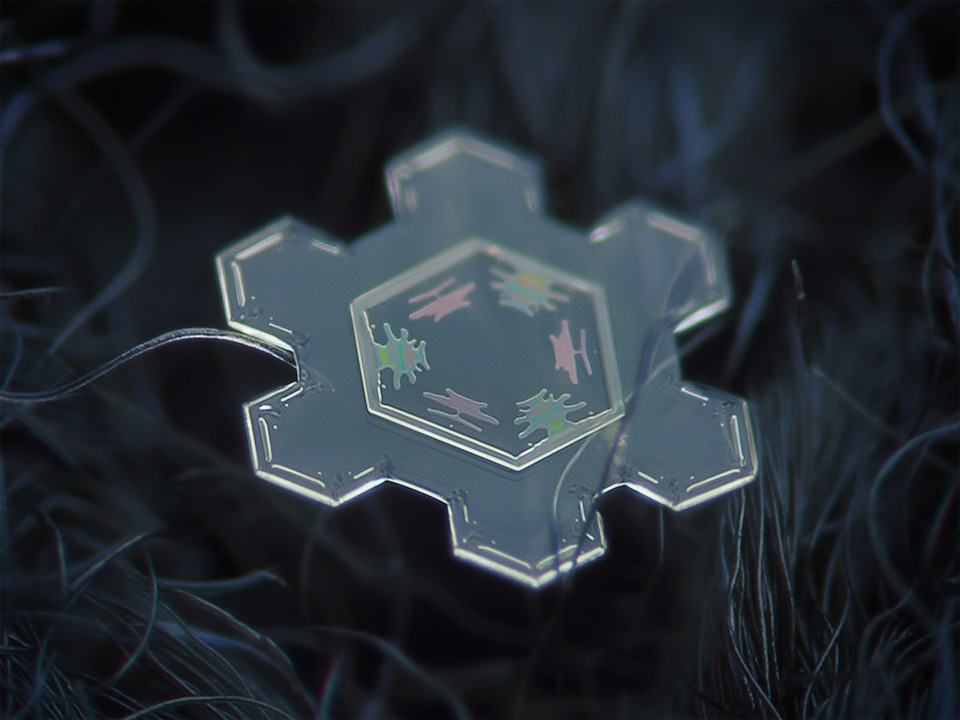
The air that the snowflake drops through has to be under freezing otherwise the snowflake will simply melt and turn into rain. Photo by: Alexey Kijatov
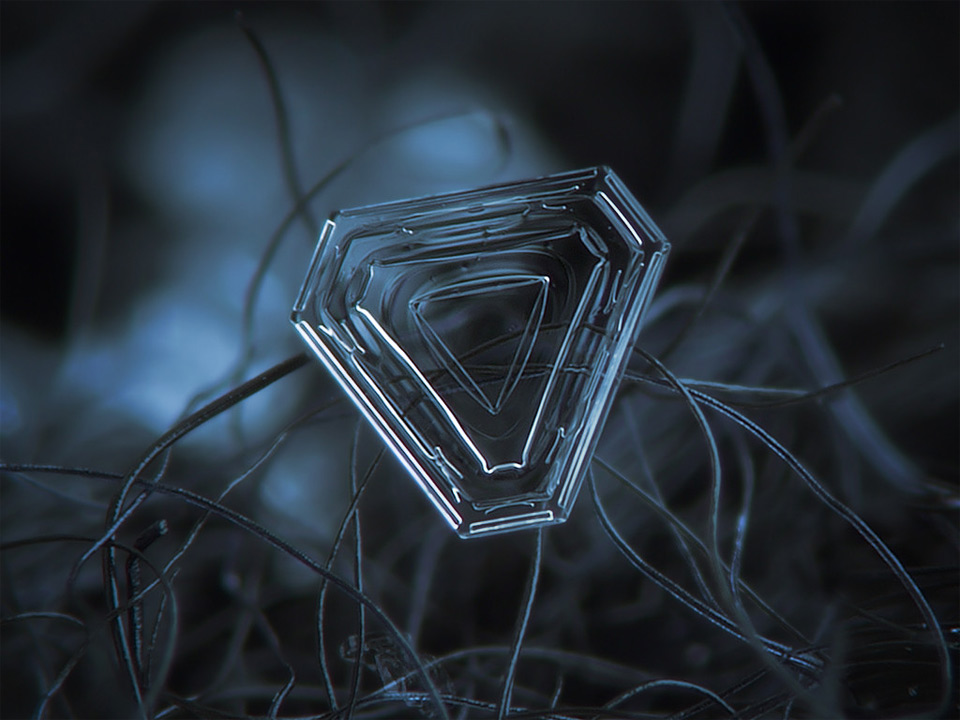
Both the form and shape of a snowflake depends on the temperature and moisture content of the cloud. Photo by: Alexey Kijatov

Snowflakes can be categorized into six main types, plate (flat), column, stars, dendrite (lacy, needle, and capped column. When it is extremely cold the snow is very fine and powdery and snowflakes become quite simple in design, usually needle or rod shaped. Photo by: Alexey Kijatov
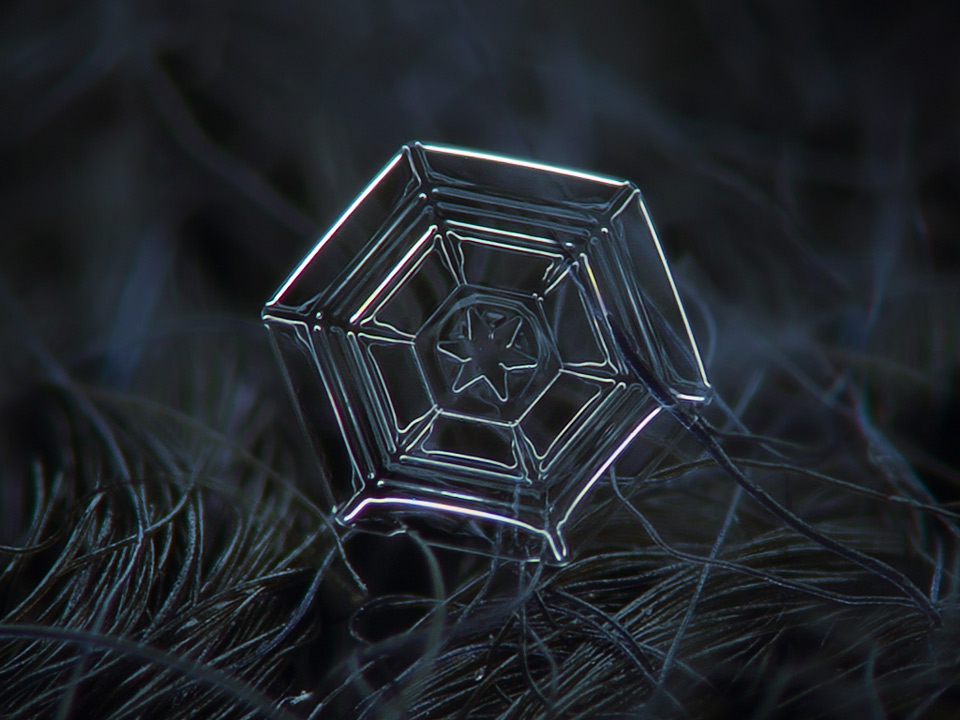
When the temperature is near to freezing point (0 degrees Celsius), snowflakes become much larger and a lot more complex in design, for example, a star. Photo by: Alexey Kijatov
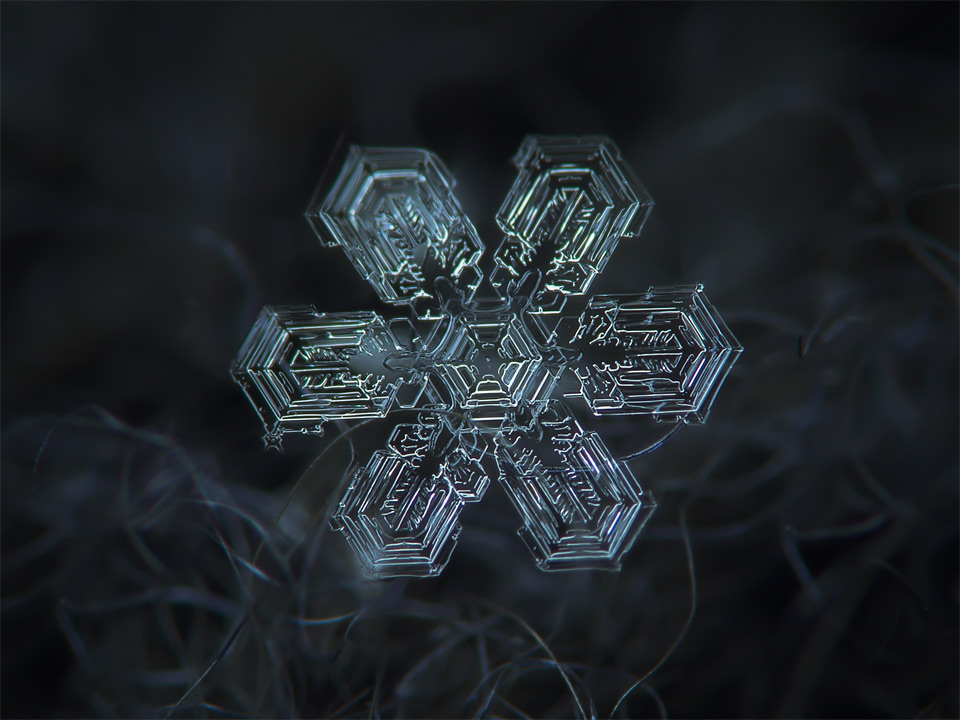
Close to 80% of the worlds fresh water supply comes from snow and ice. Snow is not actually white but clear. Snow looks white because of the way the light reflects off of the ice crystals. Photo by: Alexey Kijatov
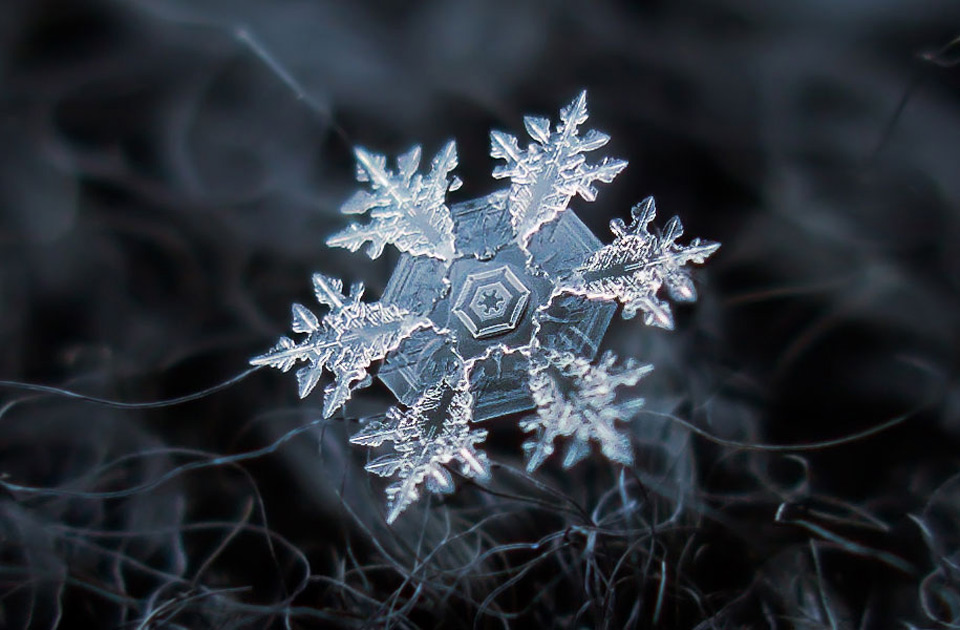
Snow reflects a high level of ultraviolet radiation and can cause snow blindness (photokeratitis). Sunglasses, goggles and other eye protection help absorb the ultraviolet rays. Photo by: Alexey Kijatov
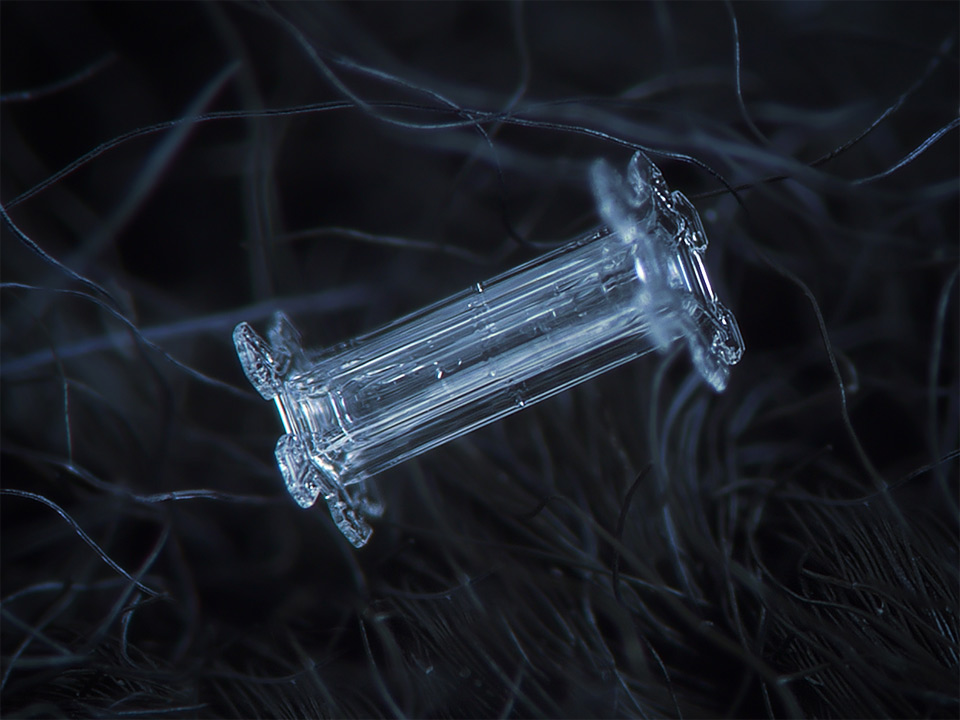
Photographer said: ” My shooting place is open balcony of my house. I was lucky that I have such nice place, where nobody disturbed me and i can return into house when i freeze.” Photo by: Alexey Kijatov
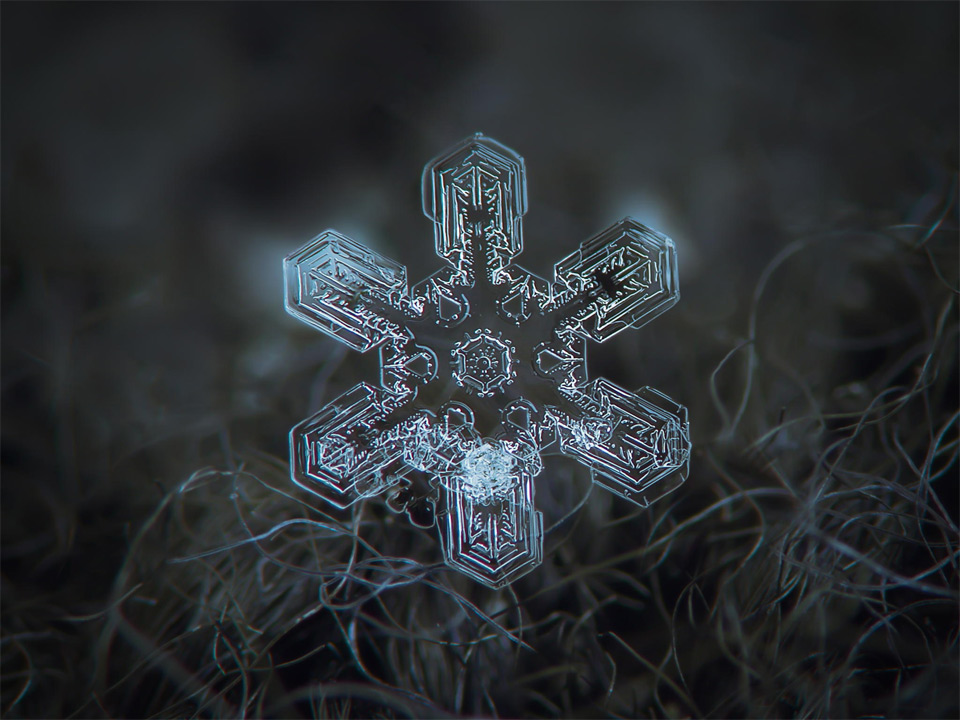
“Shooting is easy, but processing of picture takes significant time. At first, I align and average my series of identical shots. Then I do standard post processing: sharpening, additional noise removing, cleaning background from ice debris and unwanted adjacent crystals, color toning and finally, contrast curve.” Photo by: Alexey Kijatov
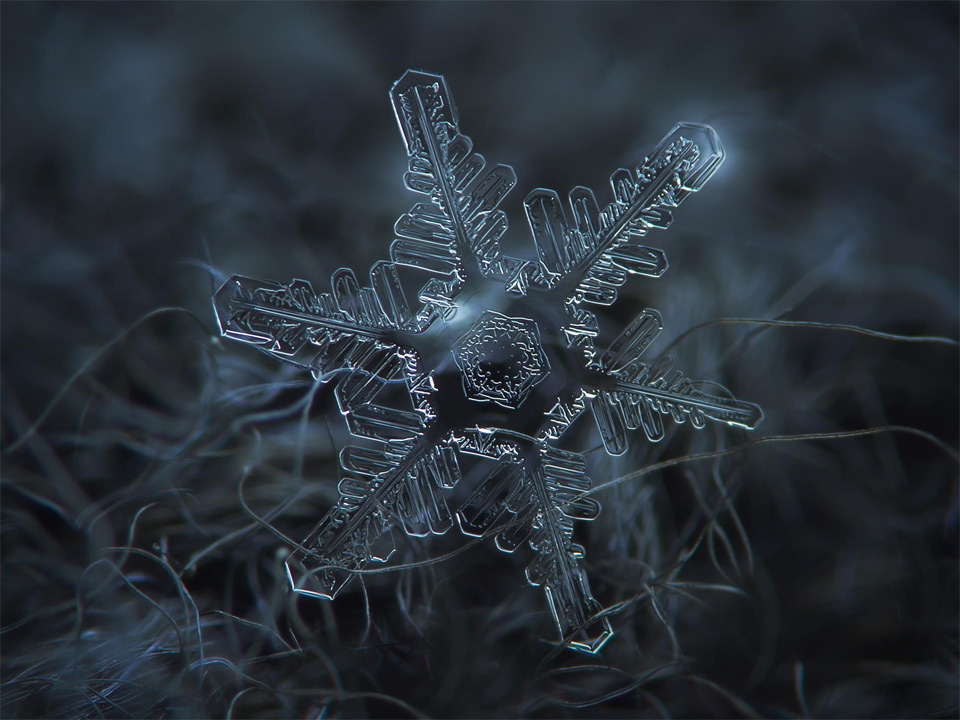
“My macro setup stands vertically at glass with optics looking down, I simply put it over chosen snowflake and shoot short series of identical shots”. Photo by: Alexey Kijatov



